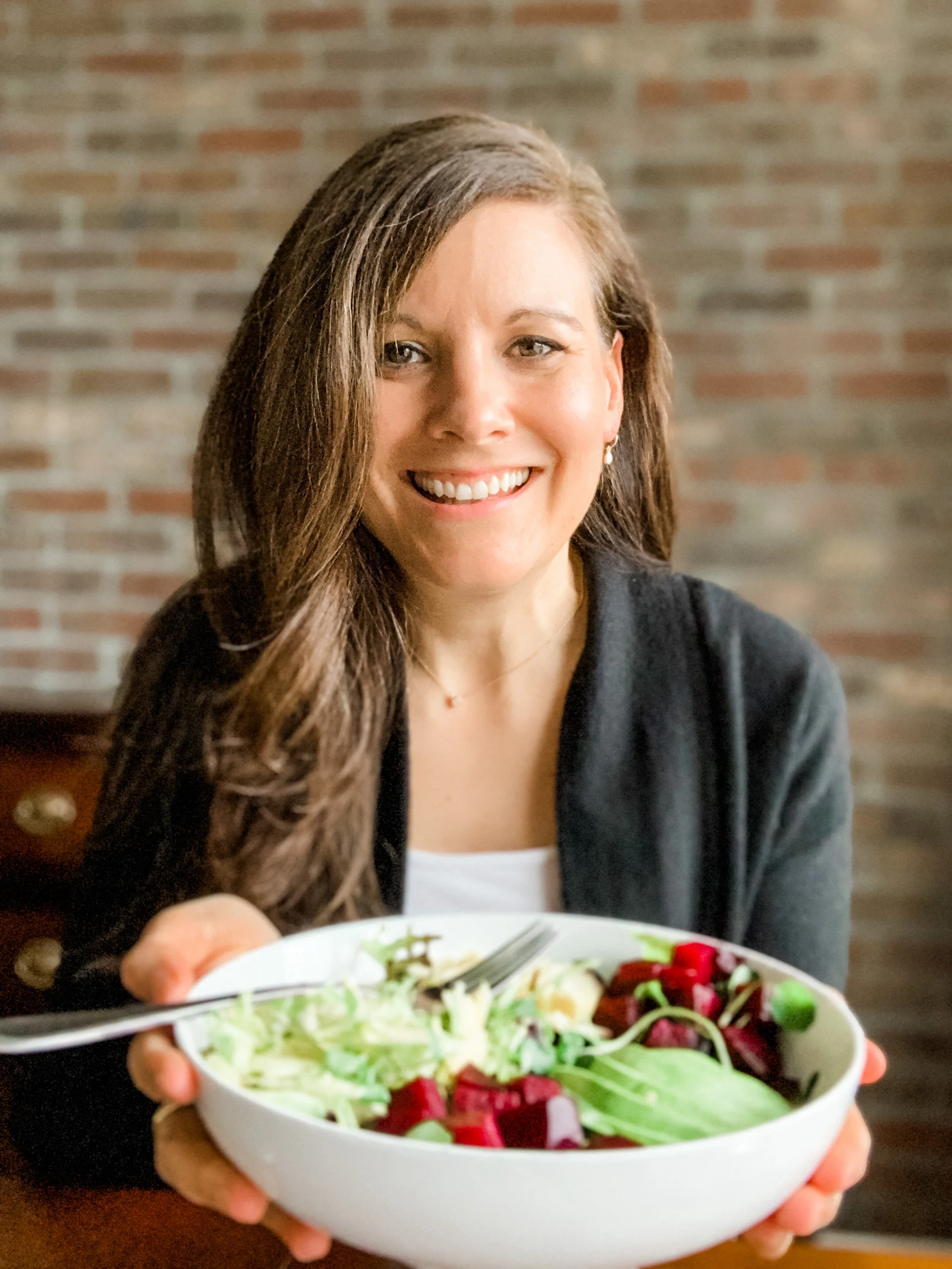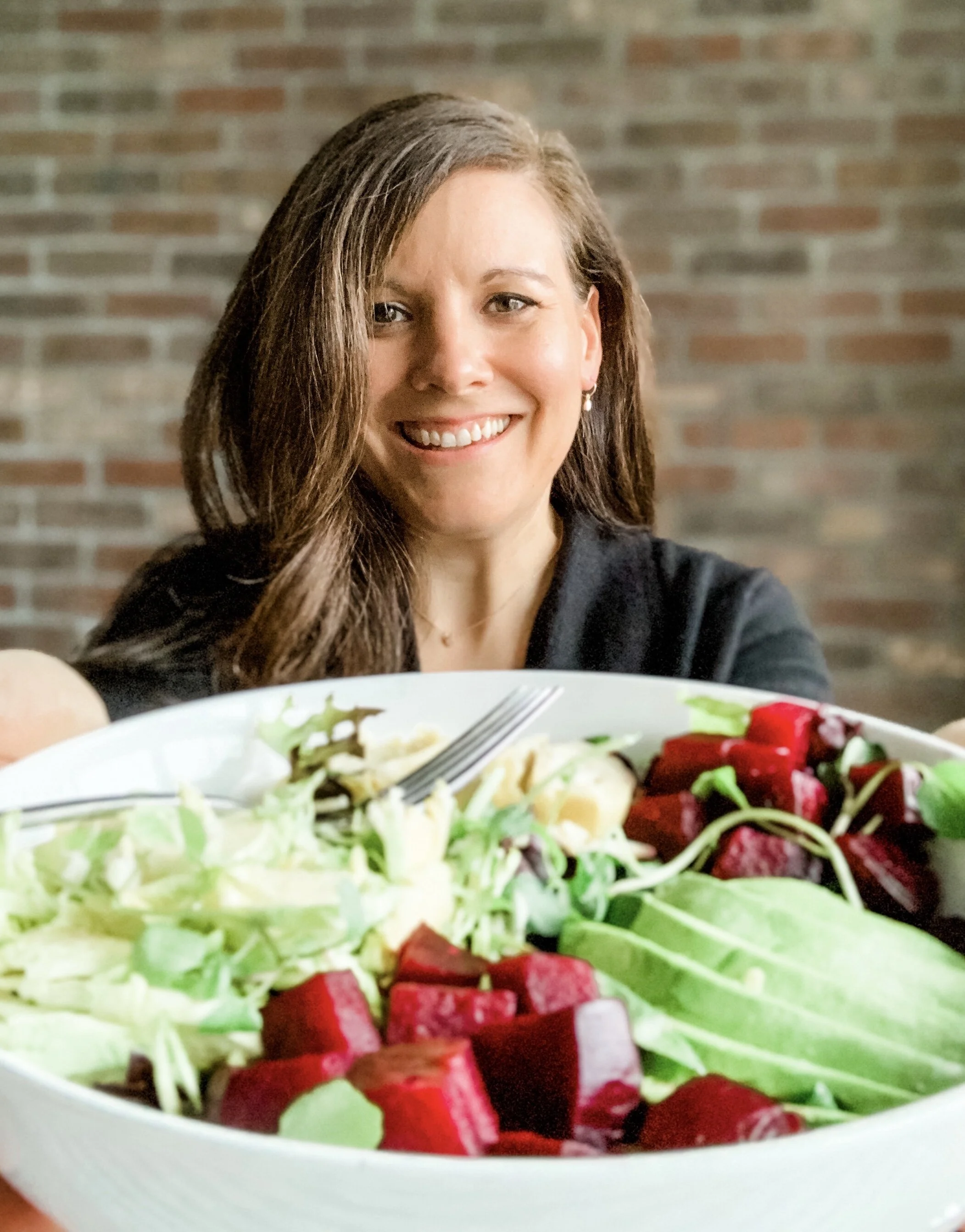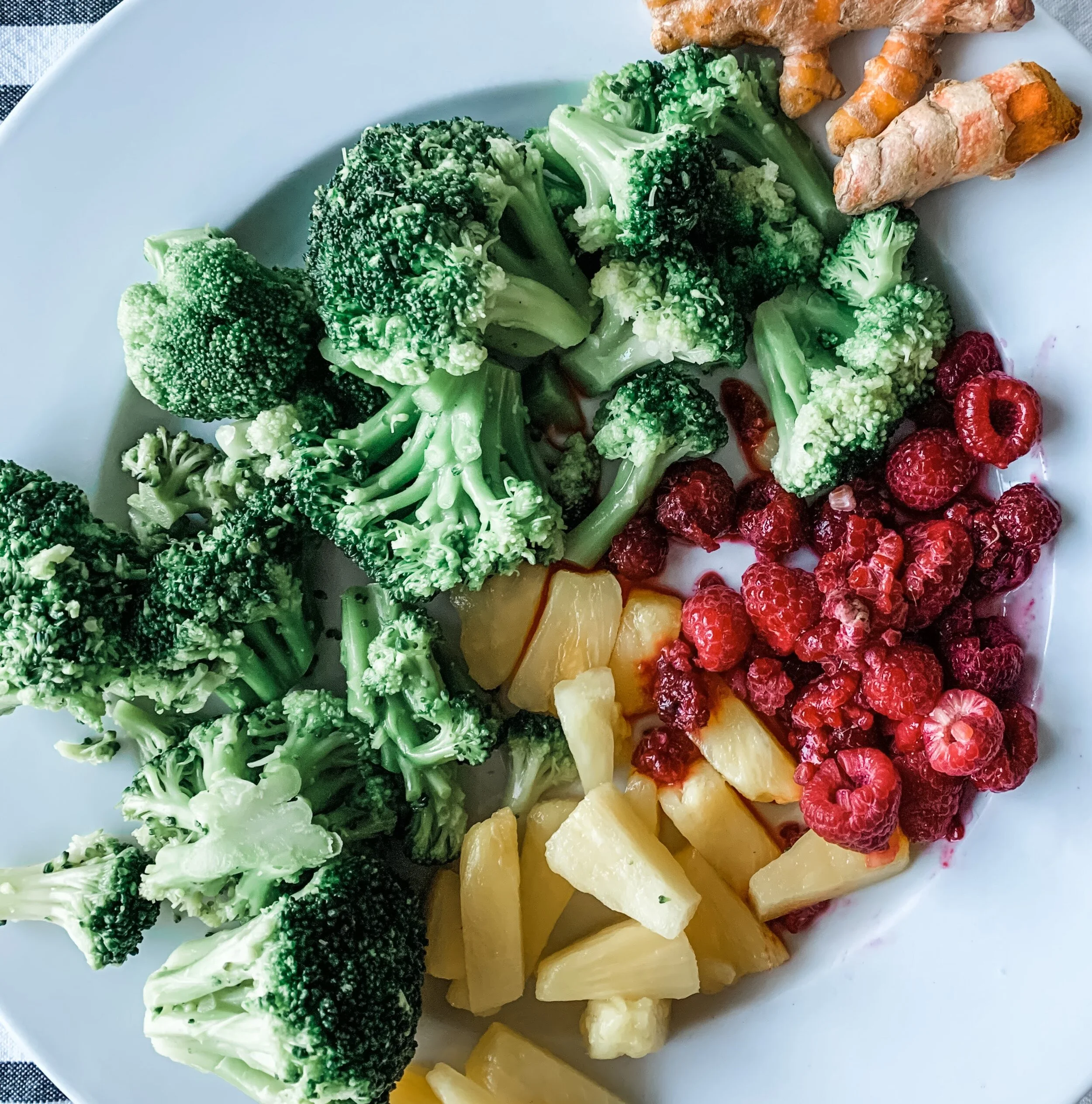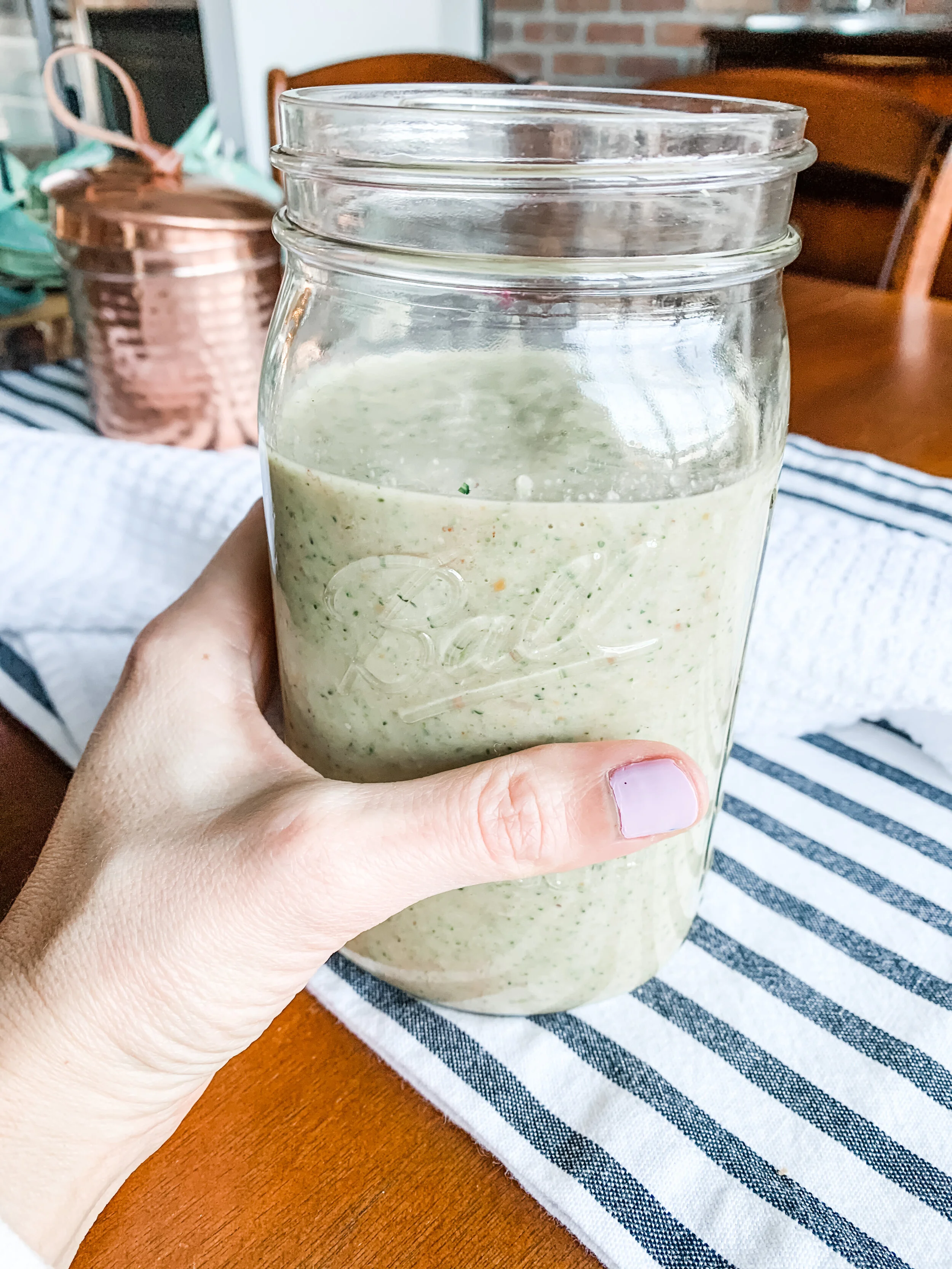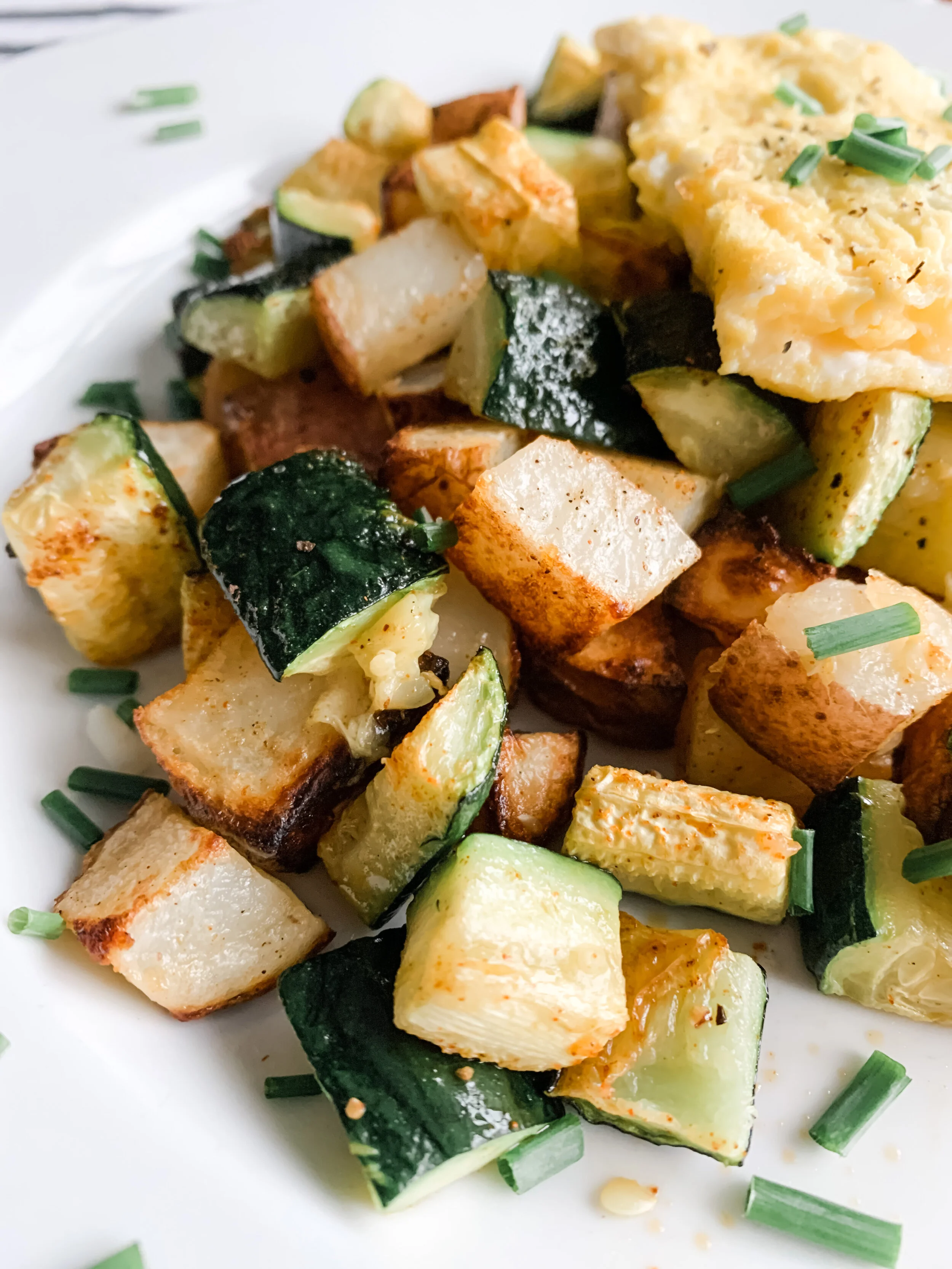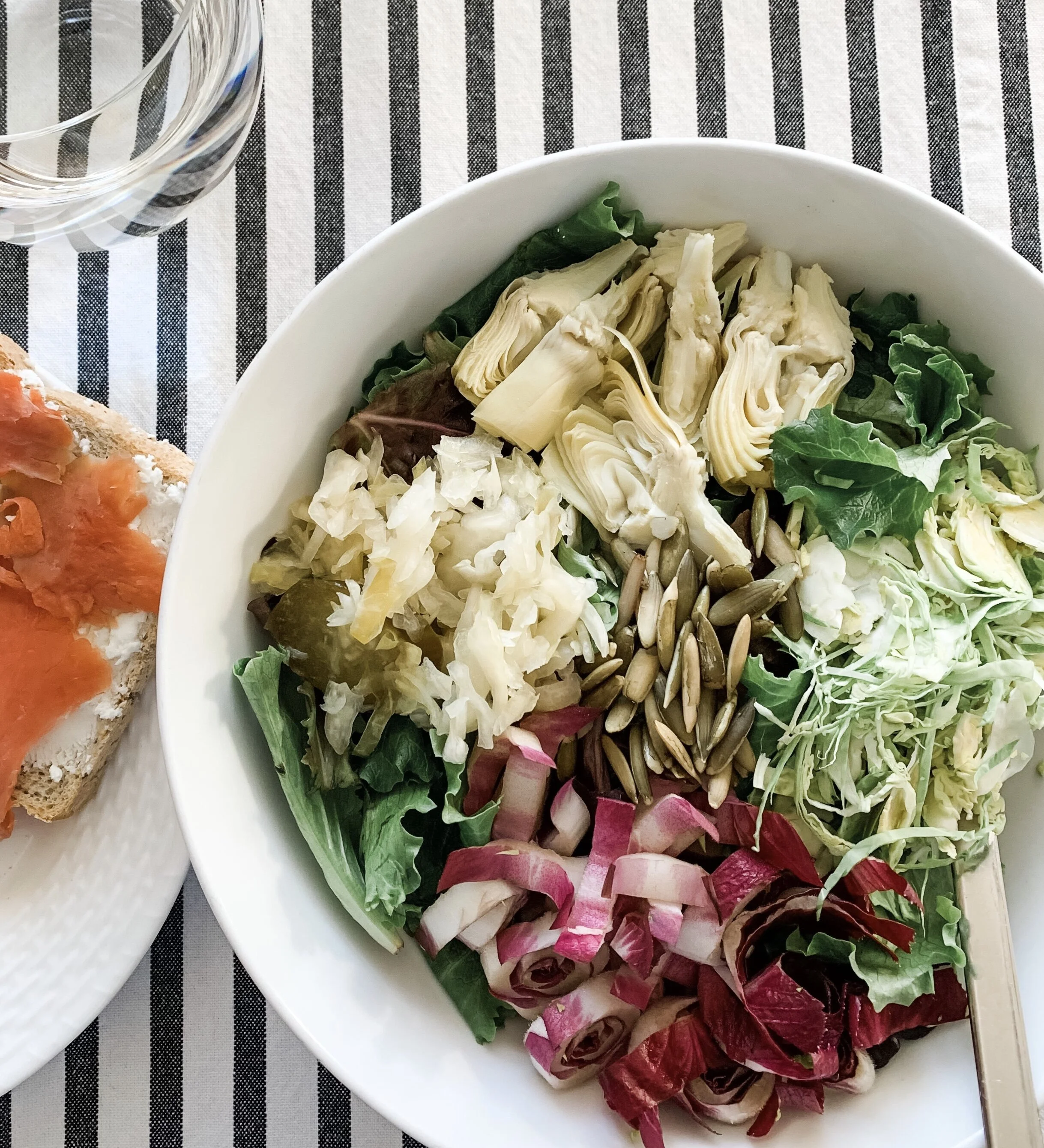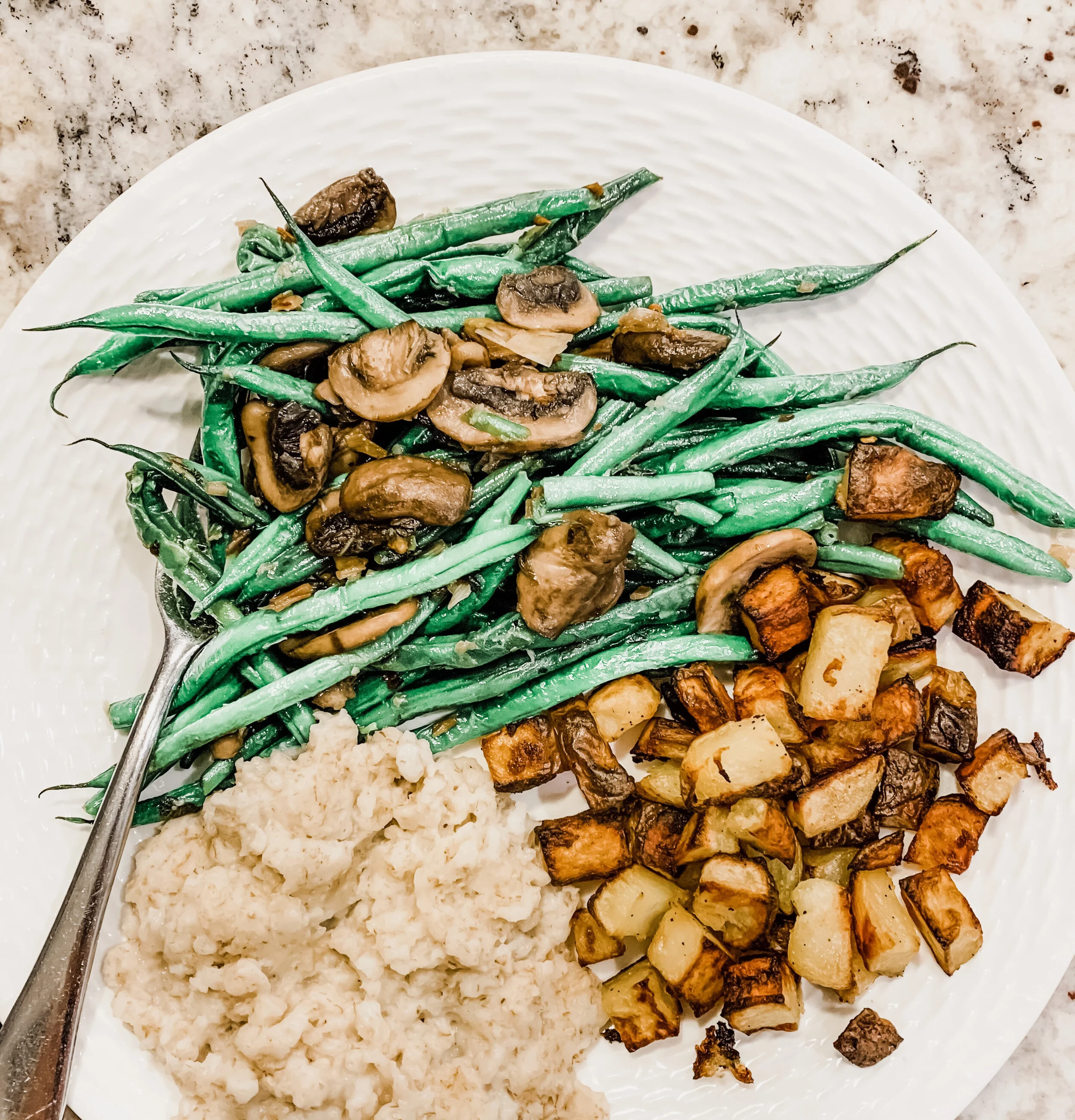How to Easily Eat More Vegetables
Blah. Blah. Blah.
We know that veggies are good for us. It’s the one thing nutrition experts actually agree on.
But it’s also the food group that gets rejected the most.
How can I make this broccoli magically disappear? How can I slyly hide this brussel sprout in a napkin, drop it on the floor for the dog, or secretly flush it down the toilet?
For a period of time, I was lucky to be getting them down once a day. And yes, that was after completing a training in holistic nutrition.
I knew all about The China Study and how a plant-based diet is best.
So what happened? Why wasn’t I eating them?
I didn’t really have a motivating reason to choose a salad over any other menu item beyond “it’s good for you“.
What I learned from making my last sustained dietary change back in 2013 is that if I’m going to make a health change, it won’t stick unless I have a really really good personalized reason for doing it. And it has to make me feel better immediately. From meal to meal, and moment to moment.
Back then, I was ready to adjust my diet because I couldn’t eat without falling into a food coma. I wanted more energy and focus after a meal and fewer sugar cravings.
So I followed The Blood Sugar Solution for months and months and felt amazing. I had veggies at every meal. I was more energetic and finally free from sugar cravings. And even dropped a few pounds in the process. Which was never my original intention, but I always see as a sign that I’ve cooled some inflammation in my body. Which is always a good thing.
Then life happened. I got divorced. I was single and dating and eating out a lot. And I traveled around Europe a bit and there was bread and cheese and very few veggies. And they slowly fell out of my routine. Oh, and I put back on the weight I’d lost plus about 15 pounds.
After remarrying, I started thinking about boosting fertility naturally to get pregnant. I read some of Dr. Sara Gottfried’s stuff. She’s a gynecologist who focuses on tackling the root cause of disease. In her book, The Hormone Reset Diet, I read she wants us to eat a pound of vegetables a day and I had to shield my eyes.
Because, how? Like, how do people even eat that many veggies?
I dabbled in it for a bit but instead I put my proverbial eggs in the hands of the fertility drugs.
And I inherited ongoing loose stools plus a hemorrhoid here and there. Then over a year ago, indigestion and bloating started. I worked with an herbalist. I bought a book on healing the gut microbiome and added in veggies and fermented foods. I threw yogurt on everything I ate. But nothing helped.
So when I heard that Viome at-home gut testing gives you a personalized approach to eating based on what’s happening in your distinct microbiome, I was on board.
I sent in my sample and got my results back, and what did they recommend?
8 cups of vegetables a day. It was my personal Everest. I couldn’t get away from it.
Every road kept leading me back to vegetables.
Let’s look at why that is.
Mighty veggies for gut health
Those little rainbow colored gems are a powerhouse of goodness. And no lab can manufacture what nature has already perfectly designed.
Veggies are a mix of antioxidants, anti-inflammatories, nutrients and prebiotics that do a ton of good. They:
Feed the healthy mix of bacteria in the gut and strengthen the gut wall.
Improve digestion and boost metabolism.
Help you feel full by decreasing the amount of glucose sugar you absorb.
Improve your bone health.
Assist with getting rid of toxins and protect your liver.
Support your body to make certain vitamins, like B and K.
10 servings of fruits and veggies lowers your risk of stroke by 33%, cardiovascular disease by 28%, and premature death from any cause by 31% (Source). That’s pretty major.
If you want to lower your risk of cancer by 14% then 7.5 servings of fruit and veggies is the way to go (Source).
Even just 2.5 servings a day will still do some good towards reducing your risk of disease and death (Source).
It’s not only how much you eat, but having a variety of plant foods that’s good. Eating 30+ different species of plant foods a week means lowered inflammation and cardiovascular disease (Source).
Even without knowing all this research, I was ready to swallow without discomfort and to get my “elimination process” running smoothly again.
Making it easy
To hit my target of 8 cups, I needed almost 3 cups of veggies or about half a plate at every meal. Including breakfast.
You guys, this could easily have been a stumbling block right out of the gate. But the smoothie gets all the props for making morning veggies portable and doable.
The breakfast smoothie
When I tell you what’s in my smoothie, you’ll probably turn up your nose Iike everyone else does.
It’s 2 cups of frozen broccoli nearly defrosted, up to 1 cup of frozen berries or other fruit, almond milk, a scoop of collagen protein powder, flax oil, freshly grated turmeric root and a half-cup of soaked, cooked and cooled whole oats.
The broccoli sounds gross but it fills me up better than any other green. And there’s a trick to making it smoothie-ready and mild tasting. This is important. Use frozen broccoli that you’ve nearly defrosted in the fridge or on the counter. Do not microwave it to defrost it. I made this mistake once in a hurry and it releases the cruciferous flavor. Instead, put it in a sealed plastic baggie and soak it in hot water. You’ll thank me later.
You could sub baby spinach or a power green mix for the broccoli. In a pinch I’ve used young watercress and sprouts but that was pretty spicy.
I get a D minus for switching up the vegetable variety in my smoothie but I do rotate my fruit selection every day.
I blend everything in a wide-mouth quart-sized Mason jar using my hand immersion blender. Make sure to blend it super well so the broccoli is barely detectable. I screw on the lid, carry it to work and drink it when I’m ready.
Now about those oats. Along with broccoli, they keep me nice and full right up to lunch. I bulk cook them in one massive batch every few weeks. To increase digestibility, I soak them first for 12 to 24 hours with a teaspoon of apple cider vinegar or lemon juice for every one cup of water. I freeze them in half-cup portions and pull one out to defrost overnight in the fridge so I have it the next morning. Done and done.
Veggie hash and eggs
With more time in the morning on the weekends, I can cook. So I scramble up a few eggs and eat them with a quick veggie hash. You can use leftover roasted veggies from the night before or do a quick veggie broil. I line a sheet pan with zucchini and potato pieces cut into half-inch squares, toss them in a bit of grapeseed oil, and then set them under the broiler, flipping them once. They cook surprisingly fast because they’re so small. Just watch them closely or they will burn. Rotate between sweet potatoes and white, yellow and red potatoes to get more variety.
Lunch salad
The easiest way to eat a variety of veggies is with a salad. I create a base of arugula, watercress or a variety of baby greens and then top it with chopped beets, shaved brussel sprouts, artichoke hearts, sauerkraut, avocado and sunflower or pumpkin seeds. The sauerkraut is a good substitute for dressing.
Every Sunday, I make five baggies of greens and toppings so I can just grab them every morning for my lunch bag.
For protein, I bulk prepare grilled chicken or turkey burgers and then freeze them individually so I can grab one each day and don’t have to resort to lunch meat which is filled with sodium sulfites, nitrates and nitrites that are bad for your gut (Source). I also take smoked salmon and hard boiled eggs.
For a whole grain, I prep large batches of brown rice, quinoa, and buckwheat just like I do with my oats. I soak them overnight before cooking them to increase digestibility and then freeze them in half-cup portions.
Dinner
My dinners are vegetarian 95% of the time. Quick cooked veggies is how I roll. And I rarely use a recipe. Most nights, I make a mix of veggies roasted on a sheet pan or sauteed in a cast iron skillet. This night the green bean casserole inspired me. I sauteed green beans in a little ghee with mushrooms, leeks, garlic, and fresh sage with a bit of beef bone broth. Dinner time is my chance to use healing aromatics and spices like fresh garlic, leeks and sage.
I always pair my veggies with some kind of grain, and this night, it was savory oats. I sleep so well after eating them.
The reality of eating 8 cups of veggies a day
I could fill a bathtub with all the veggies I eat these days.
I didn’t think I’d ever be in this place.
But, you guys, I feel so good eating this way. And it happened quickly. Within three days of following my Viome recommendations, my indigestion vanished and has not come back.
If you’ve read this post, then you know that the worry that used to wake me up in the middle of the night is gone. As a highly sensitive person, this lifestyle change is worth it for that reason alone. Plus my stool is back to normal with zero hemorrhoids. Phew. And I’ve almost lost the 20 pounds I gained a few years before.
As a woman who has never had a live birth and with hormones changing from perimenopause, my mind is at ease knowing that all these veggies are helping to reduce breast cancer risk.
You might think you could never eat this many veggies.
Start by finding your motivation. Then add something green in at each meal. Before you know it, you’ll be amazing yourself, too.
